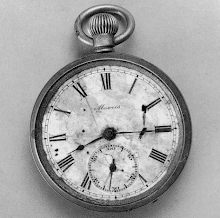Allen Hengst: On July 25th it was reported in an UXO newsletter that a 75 mm “World War I-era” artillery shell was exposed by heavy rains at Fort Totten Park [in northeast Washington, DC]. Can someone on the Spring Valley FUDS team please ascertain whether that recovered shell originated at [American University Experiment Station] AUES?
Dan Noble [project manager] explained that USACE was recently in communication with the National Park Service on that issue. NPS is preparing to survey the area for any additional munitions. USACE is serving as a technical consultant for NPS on the project. NPS has hired a contractor and may have begun survey activities this week. The project plan is to complete the survey before allowing all of Ft. Totten Park to re-open. The survey will include an investigation for additional munitions and sampling the soil for contamination ... USACE inspected and obtained x-rays of the shell. The shell was found to be a 75mm with a hex plug. This type of munition was often found in Spring Valley ...
Hengst: If it turns out to be a Spring Valley AUES munition, that is outside the Formerly Used Defense Site (FUDS) boundary, will you be responsible for the clean-up and cost?
Noble explained that, at this time, NPS is taking the lead on the project and is responsible for the cost. Ft. Totten is also a separate FUDS site, so if a larger problem at the site is detected, USACE and NPS will be in communication to determine the lead on the work, how that work should proceed, and the responsibility for the cost. So, the answer is, "perhaps."
D. Noble explained that he believes Sgt. Maurer’s pit was within the footprint of the former house at 4825 Glenbrook Road, and the builder excavated into Sgt. Maurer’s pit. The remaining contamination at the front of the former house represents debris that was pulled forward, moved out of the way, and left behind. Noble believes that the debris was not found where the soldiers buried the debris in Sgt. Maurer’s pit, but where the builder left the debris in the front yard in the early 1990s ... Noble explained that USACE Baltimore is not investigating the final location of the removed debris from the 1990s. Both USACE Baltimore and DOEE [previously] investigated ...
It is known that the debris was sent to the Ft. Totten area when the nearby Ft. Totten metro station was being built. Soil was needed at the new metro station to level out an equipment yard for the metro contractor. Some soil was sent to that area and the contractor began to spread the contaminated soil out. The area is Park Service land, lent to the Metro Authority for the construction project. The Park Service employee overseeing the land ordered that the contaminated soil be taken away. Eventually, the contaminated soil was taken away and the final destination of the soil is unknown.
Fort Totten foot trail closed by NPS





